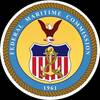
A Bang or Whimper for Supply Chains.
The expansion of the Panama Canal has been heralded as a game changer for the maritime shipping industry. However, the impact of the expanded Canal is still unclear. The port community and shipping lines are placing costly bets on the outcome. Yet, the possibility of labor unrest, the economic downturn and the depressed shipping market have added more uncertainty into supply chain decisions. The expansion of the Panama Canal is, therefore, one of many issues forcing supply chain managers to re-evaluate current strategies.
Catching Up
Scheduled for completion in 2014, the $5.25 billion project adds a third set of locks to the canal system as well as widening and deepening the existing channels. The expansion will allow the Canal to accommodate larger vessels and to significantly reduce the transit time and cost to transport cargo from Asia to the East Coast of the United States. The combination of reduced costs and the delays experienced by shippers using the West Coast ports will encourage more shippers to divert cargo to ports on the East Coast. According to Jones Lang Lasalle, a multinational financial and professional services company, as much as 25 percent of the existing West Coast cargo could shift to the East Coast.
The potential for increased cargo volumes has set off a frenzy of improvement projects in the ports on the East Coast. Larger vessels require deeper drafts, larger cranes and significant infrastructure improvements to port facilities. At least 10 ports along the East Coast have construction projects underway. The projected cost of the port projects over the next decade is $15 billion. The ports are concerned that their inability to accommodate a new generation of vessels will place them at a competitive disadvantage in seeking trade opportunities, and subsequently, new jobs.
Port improvement projects include technology to improve the operations of the terminals. Currently, the processes used to load and unload cargo in most ports are labor intensive. Pressure for upgrades comes from customers that want faster service at less cost. On the other hand, the International Longshoremen’s Association (ILA) resists any technology that could reduce the number of ILA jobs. Therefore, an unexpected consequence of the expanded Panama Canal could be labor unrest.
Labor: the Wild Card
The current labor agreement between the ILA and the United States Maritime Alliance (USMX) expires on September 30, 2012. The ILA elected Harold Daggett, then an unknown industry player, as its president last year. Yet, he has already displayed more confidence in dealing with labor issues. Daggett has warned the shipping community that an ILA strike (which hasn’t occurred in 35 years) is possible if the union cannot secure acceptable terms in the new contract. One of the most challenging issues being negotiated is how to address the ports’ efforts to utilize new technology in port operations.
The possibility of a strike undermines one historical advantage in favor of East Coast ports. Though West Coast ports have a contract with the International Longshore and Warehouse Union (ILWU), their relationship has been more volatile than labor relationships on the East Coast. The shutdown of the West Coast ports in 2002 had a significant impact on supply chains that relied on the Asian markets. Shippers’ inability to use West Coast ports forced supply chain managers to look at alternate routes and trade lanes. The East Coast ports presented a viable option and saw cargo volumes increase over the last decade. The effort to diversify supply chain options was a contributing factor in the decision to expand the Panama Canal.
Supply Chain Decisions: Many Variables
Supply chain managers, however, must still minimize cost and reduce the need to deploy much needed capital in maintaining large inventories. The cost and time invested in transporting raw materials to a manufacturing site is a critical path in the “just in time” inventory process. For East Coast ports to receive more Asian cargo, the additional transit time incurred to travel through the Panama Canal must be offset by reduced costs and other efficiencies.
The economy has made this calculus more difficult. Shipping lines have sacrificed speed to reduce costs and the overcapacity in the world fleet. The process, called slow steaming, can significantly reduce the fuel necessary to operate a vessel. However, it increases the time it takes a vessel to transit the Pacific from 11 to 15 days. If you tack on another nine days for transiting the Panama Canal, then the trip from China to the East Coast can take over three weeks. The additional transit time to the East Coast ports is fatal for high-value time sensitive goods such as electronics. Alternatively, commodities that are transported in bulk are more likely to use the Panama Canal.
Once delivered to the ports, the goods still need to move from the terminals to the end user, but the lack of funds for significant transportation projects has created challenges. Fortunately, some rail projects have decreased transit times from some ports. For example, the Heartland Corridor will shave a full day from the transit time between the ports in Virginia to Chicago, Illinois. Yet, other projects have stalled or funding has not been approved. Additionally, new environmental regulations will create added costs for vessel owners and truckers in certain ports. The Environmental Protection Agency (EPA) has pressed national standards for truck idling and the treatment of ballast water from vessels. The immediate impact of the EPA regulations is unclear, yet the EPA’s involvement has reduced the possibility that environmental issues will favor one port over another.
The opportunities and challenges in the transportation industry require supply chain managers to rethink current strategies. The rising cost of labor in China is forcing a reevaluation of China as a preferred trading partner. Experts predict that the minimum wage in China will double by 2015. Consequently, manufacturers are shifting to lower cost markets such as India and Vietnam.
These factors also suggest that labor markets in Mexico and South America could become more competitive in the future. Labor unrest in United States ports, delays in vessel transit and increased costs of complying with environmental regulations create a favorable environment for locating manufacturing sites closer to domestic United States markets. Near sourcing has become more important to supply chains as companies are increasingly concerned about the impact of recalls on brand value, the theft of intellectual property and the anticipated increased cost of credit.
An Expanded Canal: only one part of the puzzle
Supply chain managers need to look beyond the noise regarding the Panama Canal. Importers need to determine how they can best respond to unpredictable demand and unexpected costs. If slow steaming, labor unrests and the cost of regulations increase the cost of the supply chains, then supply chains need to be reconfigured. In some instances, the edge in labor costs may be overcome by the increased cost and unpredictability of a lengthy supply chain.
Businesses must review their transportation agreements. They should require their transportation providers to absorb more risk and to develop more options in reconfiguring supply chains. In most transportation agreements, the customer absorbs the increased cost of fuel, the cost of additional regulations and delays associated with labor strikes. In many instances, customers are not able to increase the price of a product to absorb the immediate impact of the additional transportation charges.
In a competitive market, the customer should challenge carriers to provide pricing structures that allow for flexible trade lanes in exchange for more stable pricing and predictable delivery dates. If the transportation industry does not respond to the needs of a global market, then the market will begin the process of near sourcing and seeking other strategies to create leverage over transportation providers. The current situation may require a rethinking of the ‘just-in-time inventory process to accommodate new realities.
The expansion of the Panama Canal creates new possibilities for transporting goods from the Asian markets. While 70 percent of the United States’ population lives east of the Mississippi, the current process relies heavily on West Coast ports and rail systems. The objective is to find the most efficient means of getting products in the hands of the end users. In many instances, the current process has created additional costs and inefficiencies in the supply chains. The introduction of East Coast ports will provide opportunities for competitive alternatives. Yet, it is still too soon to determine whether the impact will be a bang or a whimper to supply chains.
(taken from Maritime Professional magazine's 2Q 2012 edition)



